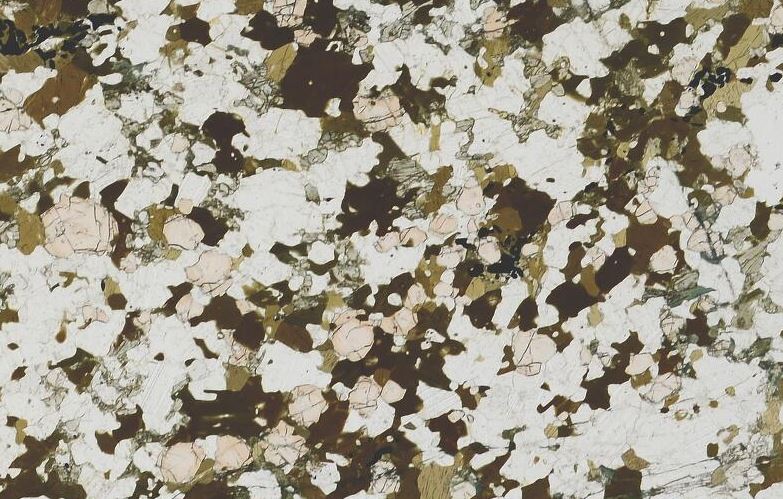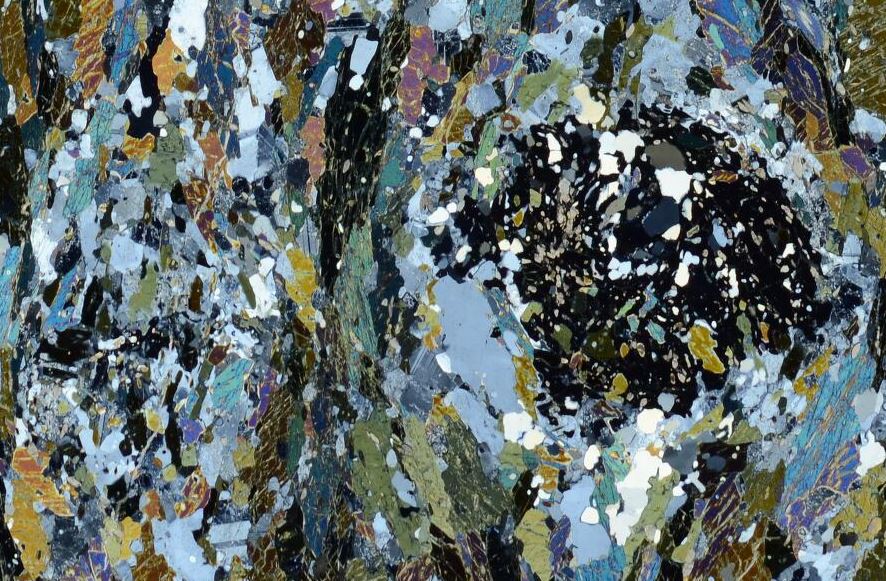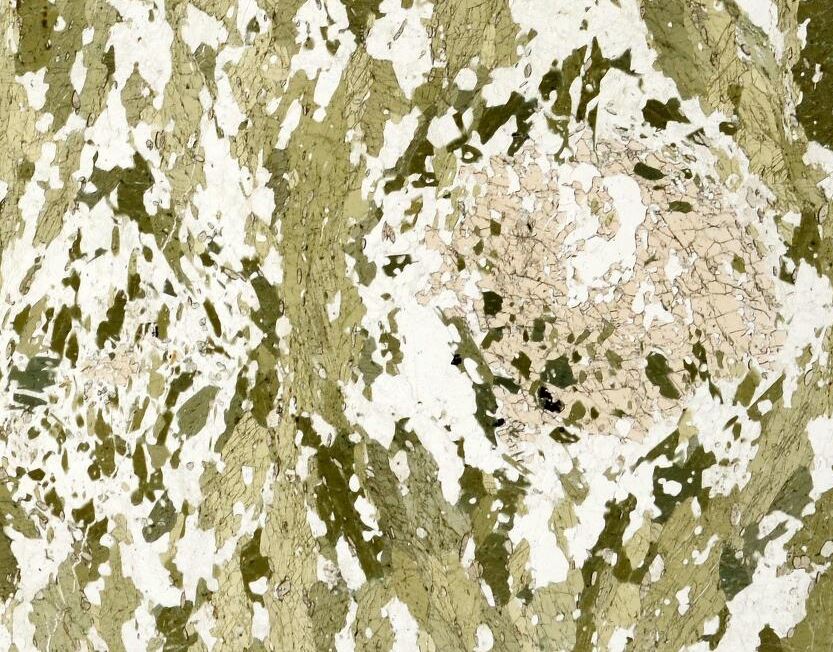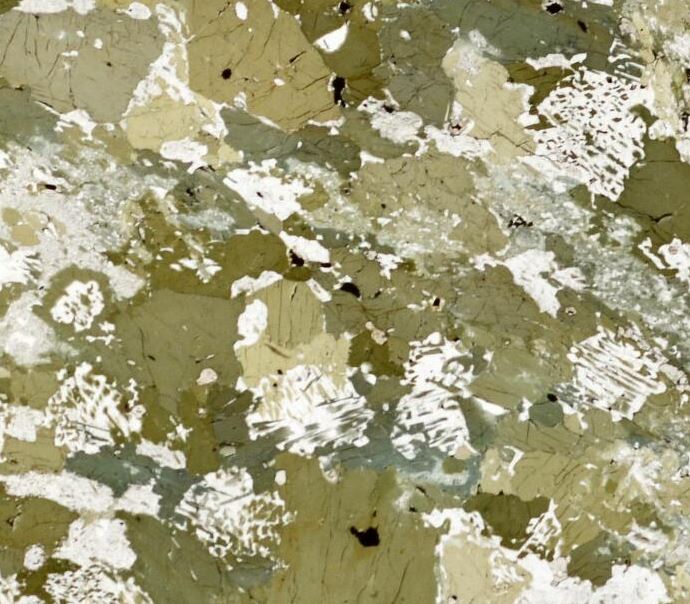
George Barrow (image via BGS)
The phrase ‘new paradigm’ is a little shop-worn but it still catches the eye. To see it used in a “discussion and reply” on a dry-looking metamorphic petrology paper is really something unusual. Tracing through these articles really shows how metamorphic petrology can get to the heart of understanding what happens in the core of mountain belts.
The example of “discussion and reply”1 I’m discussing here is truly remarkable. Everyone is terribly polite and there is lots of new data and ideas contained that shed light on a classic area for the understanding of metamorphism. It also illustrates the perils and challenges of interpreting complex rocks that formed in the heart of an ancient mountain.
A paper worth discussing
The original paper, entitled ‘Metamorphic P–T and retrograde path of high-pressure Barrovian metamorphic zones near Cairn Leuchan, Caledonian orogen, Scotland’ is by Kasumaza Aoki of Tokyo, Brian Windley of Leicester and others. It studies metamorphic rocks from the Scottish Highlands. You’ve heard of Barrovian metamorphism, (if not, get thee hence), this is the type locality, where George Barrow first identified zones of rock defined by particular ‘index’ minerals.

Sample of Cairn Leuchan Gneiss, collected by George Barrow himself! Garnet, plagioclase, hornblende (brown), pyroxene (green). From BGS, sample S8146
Barrovian metamorphism is typical of mountain belts. It’s thought to be caused by thrusting and stacking of rock slices within a growing mountain belt, that buries and heats up the rocks within it – causing metamorphism. This model is simple, classic and perhaps wrong. Our original paper looks at a slice of high grade rocks from the hottest, sillimanite zone. Detailed metamorphic petrology shows that “the rocks underwent high-pressure granulite facies metamorphism at P = c. 1.2–1.4 GPa and T = c. 770–800 °C followed by amphibolite facies metamorphism at P = c. 0.5–0.8 GPa and T = c. 580–700 °C”.
The later metamorphism is pretty standard for the area, but the earlier high pressure phase is unusual, suggesting these rocks were buried much deeper than previously thought. Our authors conclude that high-grade Barrovian metamorphism is retrograde, the metamorphic minerals formed as the rocks moved back towards the surface, masking an earlier deeper phase. They also suggest that the measured high-pressure metamorphism was also formed *on the way up* and that these rocks (perhaps all rocks in the area, there’s evidence nearby at Tomatin) had previously been down to eclogite or blue-schist depths.
If this paper were science journalism (or course it isn’t) you could accuse it of ‘burying the lede’ – the abstract focuses purely on what they proved. The major implications of their results are made much more explicit in the Discussion by Daniel Viete and others. 

BGS sample S98121. Garnet amphibolite from Tomatin. First XPL then PPL. Relict high-pressure eclogitic garnet breaking down to plagioclase and amphibole as it moved towards the surface.
“Interesting, but maybe it’s actually….”
The discussion (by Daniel Viete, whose research I’ve written about before and others) argues against the original papers conclusions, using two lines of attack. Firstly they focus on how hard it would be to get rocks so hot, so early in the orogeny2. Other high pressure rocks in the Grampian Orogeny are much colder (e.g. blueschists in Clew Bay, Ireland). From dating, we know that the Scottish rocks were metamorphosed relatively quickly (18 million years or less). Indeed Viete has already written about the difficulty of getting rocks in this area hot enough, quick enough. This was for the well known temperatures. The problem is even greater for Aoki’s earlier deeper and hotter phase. Listing all the ways these rocks could have been heated up (mantle melts, radioactive heating, mechanical heating, already hot from rifting) they conclude that the early measured temperatures are not possible.
Secondly they describe the local geology in terms of networks of long-lived shear zones, that interleave Dalradian sediments with older basement rocks. They also provide a date of 1 billion years (much than the Ordovician age of Barrovian metamorphism) from the Cowhythe Gneiss at Portsoy, a nearby patch of high grade rocks. In conclusion, the early high-pressure metamorphism that Aoki and others describes is from an entirely different orogeny and found only in odd slices of older rock.

BGS sample S94156. Garnet amphibolite from Tomatin. Intergrowths of plagioclase and amphibole – formed by decompression of an eclogite?
“With respect, no it’s not. Plus we’ve got a brand new paradigm!”
In their reply, Aoki and others defend their conclusions. Their rocks are not basement and are totally different from the Cowhythe Gneiss. Plus, old ages can often be ‘inherited’ – dated zircons may contain old ages since the crystal was a ‘detrital’ grain within the sediment that was later metamorphosed. They then turn to their explanation for their results. Acknowledging that “a reply to a comment is not the correct place to propose an entirely new paradigm for such a classic orogen” they nevertheless provide a brief overview, promising to “present our model more fully in a future publication“.
They start with the well-known enigma of how to provide the heat for Barrovian metamorphism. Modelling suggests that stacking rocks and waiting for them to heat up (the classic England & Houseman model) actually takes 50 million years. Viete has previously proposed the heat came in via advection via hot fluids. Aoki’s model proposes “the extrusion of a major wedge of hot deep eclogite which was exhumed up a subduction channel several tens of kilometres thick“.
Wow.
What they are proposing is that hot rocks within the subduction zone, perhaps 40 km below the slowly heating orogenic wedge, broke free and was squeezed up into it, heating the wedge and causing rapid Barrovian metamorphism. This would be an extremely dramatic thing and is a radical departure from existing models for this orogeny, which is itself the ‘type locality’ for all instances of Barrovian metamorphism. Aoki refer to one earlier paper by a group from Cambridge that propose a similar mechanism for the Alps. The Alpine eclogite wedge is still clearly eclogite forming a discrete unit within other nappes. It’s not (yet) clear how Aoki’s traces of earlier high pressure minerals in an relatively homogenous Dalradian correspond to this.
What does it all mean?
For what it’s worth, I’m a little sceptical – my headline follows Betteridge’s Law – but we’ll have to wait for the paper that properly presents the new model before we can judge.
One thing that strikes me is how much Wheeler’s paper on the importance of stress throws doubt on this work. Tales of packages of rock squeezing 10s of kilometres up into an orogeny puts a lot of weight on the traces of high pressure metamorphism that are the main evidence. Explaining high pressures in terms of localised stress starts to seem like a much simpler explanation.
This is a fascinating series of papers3. It highlights how vital metamorphic petrology is to understanding mountain building processes. George Barrow first identified his zones over a hundred years ago and the Scottish Highlands have been intensely studied ever since, yet we still don’t fully understand how they formed.
The fact these papers are hidden behind a paywall is in stark contrast to the pictures I’ve used. All come from the British Geological Survey who have made them free to all. The depth of coverage is fabulous – I’ve been able to find images from the key localities mentioned in the papers within minutes. This illustrates the power of open data rather nicely – if only we could all find scientific papers as easily.
References
The original paper.
AOKI K., S. MARUYAMA & S. OMORI (2013). Metamorphic P–T conditions and retrograde path of high-pressure Barrovian metamorphic zones near Cairn Leuchan, Caledonian orogen, Scotland, Geological Magazine, 151 (03) 559-571. DOI: http://dx.doi.org/10.1017/s0016756813000514
The discussion and reply.
Viete D.R. & S. A. Wilde (2014). Discussion of ‘Metamorphic P–T and retrograde path of high-pressure Barrovian metamorphic zones near Cairn Leuchan, Caledonian orogen, Scotland’, Geological Magazine, 151 (04) 755-758. DOI: http://dx.doi.org/10.1017/s001675681300099x
The Alpine paper
Smye A.J., Tim J.B. Holland, Randall R. Parrish & Dan J. Condon (2011). Rapid formation and exhumation of the youngest Alpine eclogites: A thermal conundrum to Barrovian metamorphism, Earth and Planetary Science Letters, 306 (3-4) 193-204. DOI: http://dx.doi.org/10.1016/j.epsl.2011.03.037
An old paper on the Tomatin ‘eclogites’

Interesting paper (& I don’t have access to Geological Magazine here, I don’t think). The model in the Reply reminds me of ideas that Shige Maruyama (the second author, I think) was talking about while he was a post-doc in the late 80s/early 90s. He talked about blueschist exhumation being like the movement of a watermelon seed squirted up from between two fingers pinching together. (Interesting that this was quite a while before channel flow models for the Himalayas were proposed.)
I don’t know if that model was ever published. It seemed very arm-wavy, and didn’t seem very testable when he brought it up seminar talks. (And the possibility that apparent metamorphic pressures result from stress makes it even harder to test, I think.)
When you pump up your bicycle tyres, the pump gets hot, due to friction in the pump mechanism, and the compression of the air.
Does the same effect hold for rocks under compression (ignoring burial ~ to keep in line with John Wheeler’s paper in June last year). Whilst the volume change is much lower, there must be some increase in temperature?
Is this a further thermal input, to those not so deeply buried rocks?
Does some mathematician want to link differential stress to temperature increase?
Hi Roy,
There is a mechanism called ‘shear heating’ that has been considered as a source of heat for metamorphism that is basically what you describe. When people do the maths on it, it’s usually not significant.
Some of my other metamorphism posts talk more about it.